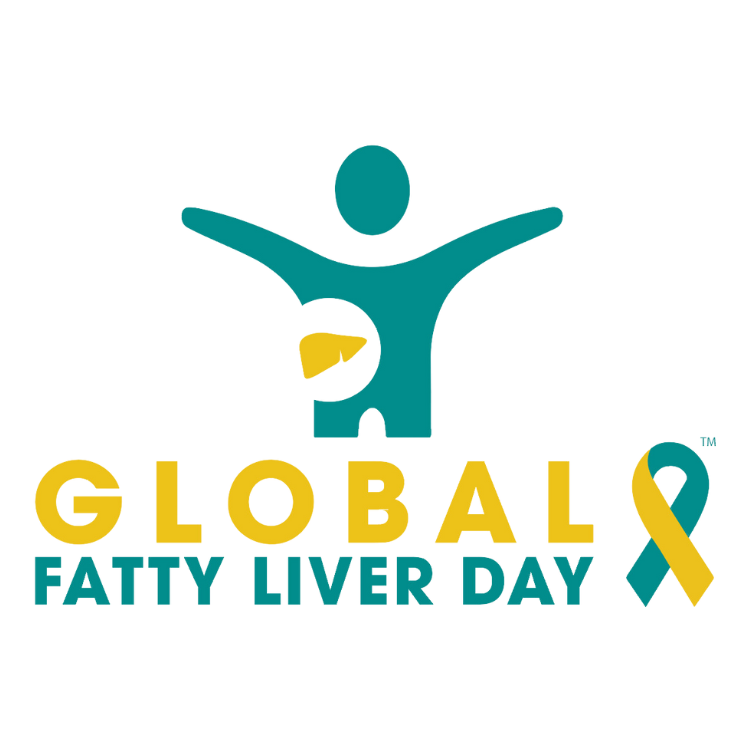#fattyliverday Toolkit
About Global Fatty Liver Day
Global Fatty Liver Day (formerly International NASH Day) is the premier, international education campaign that is convened by Global Liver Institute annually, on the 2nd Thursday of June, to raise visibility and urgency around the impact of fatty liver disease, and its more advanced form, on our communities.
An informed worldwide community is essential to reduce the global prevalence of fatty liver disease, which can advance dangerously if left undetected. This campaign convenes physicians, advocates, and other experts to share the latest insights on how to prevent, diagnose, and manage fatty liver disease relevant to their local communities.
Follow Global Liver Institute for updates online:
Join the conversation on social media. Follow and tag us on Facebook, Instagram and LinkedIn.
Use the official hashtags #fattyliverday and #ActNowScreenToday
In Preparation for your events:
Roll up banner design file (see below for instructions)
Global Fatty Liver Day logo (color, PNG)
Global Fatty Liver Day logo (white, PNG)
Global Fatty Liver Day logo (color, EPS)
Global Fatty Liver Day logo (color, PDF)
Banner Graphic 16:9 (color, PNG)
Web Banner Graphic (color, PNG)
“I Support” GFLD Buttons (see below)
Sample Social Media Posts & Graphics
You can copy-paste and use all these sample posts to raise awareness about fatty liver disease and show your support for Global Fatty Liver Day. To save the images, make sure to right click and click on save as. All these featured example posts can be used on Facebook, LinkedIn and Instagram.
📣Today is Global #fattyliverday! We are joining Global Liver Institute to raise awareness about #fattyliverdisease in [insert country]. Join us and all our partners around the world as we raise awareness about this serious #liverdisease that is on the rise.
📣Aujourd'hui, c'est la Journée mondiale du foie gras! Nous nous joignons à Global Liver Institute pour sensibiliser à la maladie du foie gras en [insérer le pays]. Rejoignez-nous ainsi que tous nos partenaires du monde entier pour sensibiliser l'opinion à cette grave #maladiedufoie qui est en augmentation.
📣Hoy es el día mundial del hígado graso! Nos unimos a Global Liver Institute para crear conciencia sobre la enfermedad del hígado graso en [insertar país]. Únase a nosotros y a todos nuestros socios en todo el mundo mientras creamos conciencia sobre esta grave #enfermedaddelhígado que está en aumento.
!اليوم هو اليوم_العالمي_لمرض_الكبد_الدهني
انضموا إلينا وإلى جميع شركائنا حول العالم لرفع مستوى الوعي بهذا المرض الخطير والمتزايد.
Often considered a “silent” disease, #fattyliverdisease and its more severe form doesn’t present obvious symptoms until it is too late. Here are 3 reasons why you should be screened.
👉Learn more: globalfattyliverday.com
#ActNowScreenToday
Every move matters, especially for your #liver.
From boosting heart #health to reducing your risk of #fattyliverdisease, movement is one of the most powerful tools we have for #prevention and long-term #wellness.
🌍 This Global #FattyLiverDay (June 12), join the #LiverMOVEment and take action for your health — one #walk, #stretch, or #dance break at a time.
Learn more: https://globallivermovement.org/
Noninvasive tests significantly reduce the risk of complications compared to liver biopsies. Traditional biopsies carry a small risk of serious complications. Noninvasive methods eliminate these risks, making the diagnostic process safer for patients.⚕️🔬
#ActNowScreenToday #BeyondtheBiopsy
Pediatric fatty liver disease is a serious concern affecting many children. Appropriate nutrition is key to preventing and managing this disease. 🍎🥝🥗
Our Veterans deserve the best healthcare, which is why addressing #fattyliverdisease is crucial. With NAFLD/MASLD cases tripling, it's essential to support Veterans' liver health through education, guidelines, and comprehensive care. Let's ensure our #Veterans receive the care they need.
#ActNowScreenToday
Did you know fatty liver disease isn't just an #obesity issue?
Lean individuals, often with smaller waists and better metabolic profiles, can still be affected – and they may experience worse outcomes and faster disease progression.
#ActNowScreenToday
Global Fatty Liver Day Roll up Banner
Download the roll up banner design file, add your organization logo and any additional content you would like to add and print the roll up banner.
31.5 x 79”
One-sided
“I Support” Buttons
Download the button design file and order your own wearable buttons to distribute at events.
For the best quality, buttons can be 3 - 5” in diameter.
White background
Example image below:
Virtual Backdrops
Hosting a webinar? Download one of our virtual backdrops.
Share Educational Materials
Download our printable PDF patient education materials in 18 languages.




























